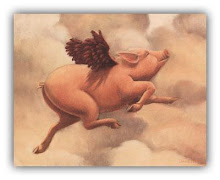 My son Jordan graduated from high school on Monday. We are very proud of him! In honor of his graduation, we had family come into town to help us celebrate. Dessert on Sunday night was "STRAWBERRY TALL CAKE". It's an easy-to-do recipe, and the cake has quite a presence.
My son Jordan graduated from high school on Monday. We are very proud of him! In honor of his graduation, we had family come into town to help us celebrate. Dessert on Sunday night was "STRAWBERRY TALL CAKE". It's an easy-to-do recipe, and the cake has quite a presence.STRAWBERRY TALL CAKE
Ingredients:
1 box (16 oz.) angel food cake mix
1 tsp. vanilla extract
1 box (3 oz.) strawberry gelatin
2 tubs (8 oz.) whipped cream cheese, at room temperature
2/3 cup seedless strawberry preserves
2 tubs frozen whipped topping, thawed
Fruit for garnish
 Preheat oven to 350 degrees. Line 3 9" cake pans with parchment. (Or use a coffee filter, as I did. It worked great!)
Preheat oven to 350 degrees. Line 3 9" cake pans with parchment. (Or use a coffee filter, as I did. It worked great!) Prepare cake mix according to directions on box, adding the vanilla extract. Divide batter evenly among the 3 cake pans. Gently tap to spread batter.
Prepare cake mix according to directions on box, adding the vanilla extract. Divide batter evenly among the 3 cake pans. Gently tap to spread batter. Bake 18 minutes, or until toothpick comes out clean. Invert onto cooling rack and remove paper.
Bake 18 minutes, or until toothpick comes out clean. Invert onto cooling rack and remove paper. In bowl of electric mixer, mix gelatin and 2/3 cup boiling water until gelatin is dissolved. Add cream cheese and whip for a minute or two. If mixture is not set enough to spread, place bowl in the refrigerator or ice water bath until spreadable.
In bowl of electric mixer, mix gelatin and 2/3 cup boiling water until gelatin is dissolved. Add cream cheese and whip for a minute or two. If mixture is not set enough to spread, place bowl in the refrigerator or ice water bath until spreadable.




































